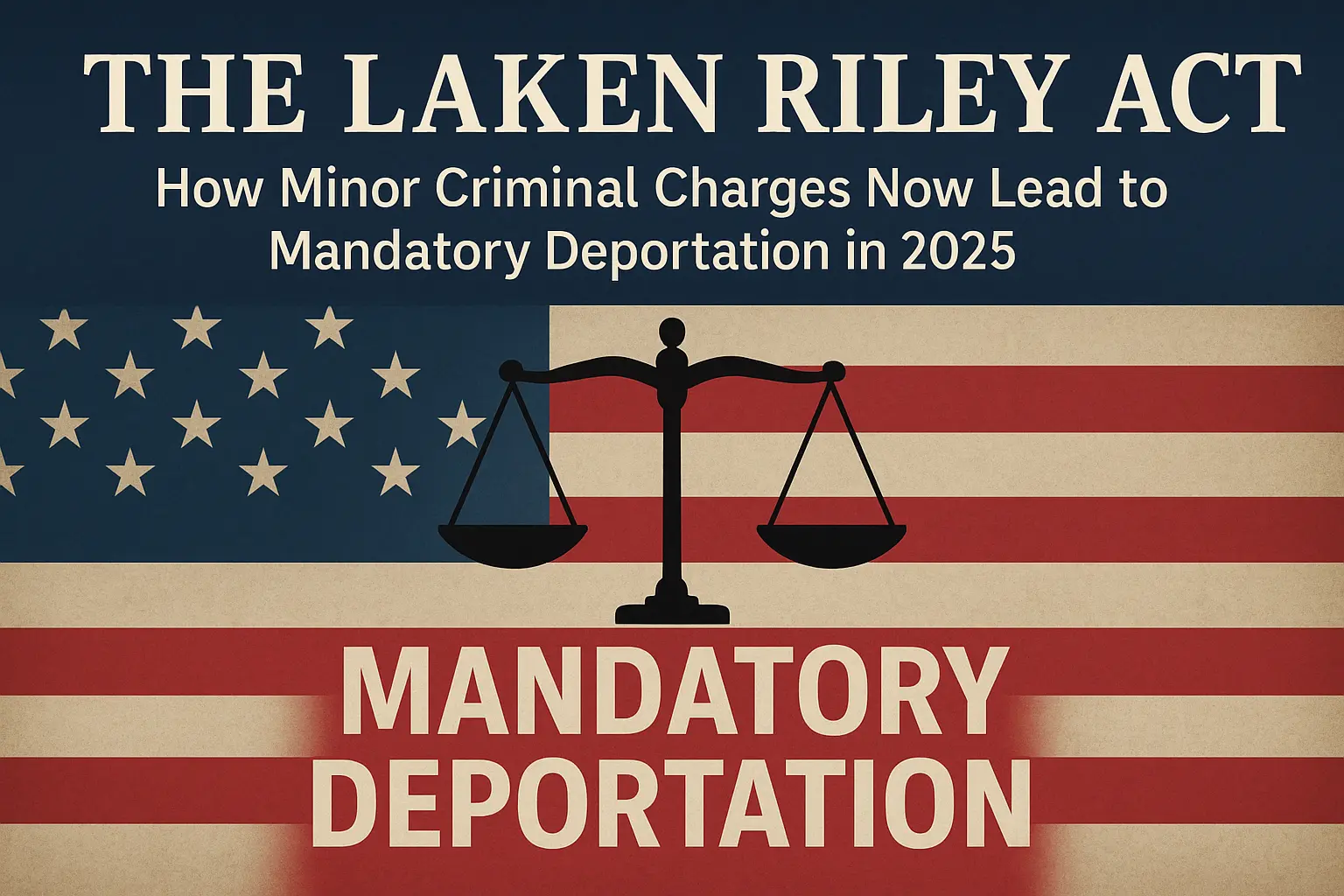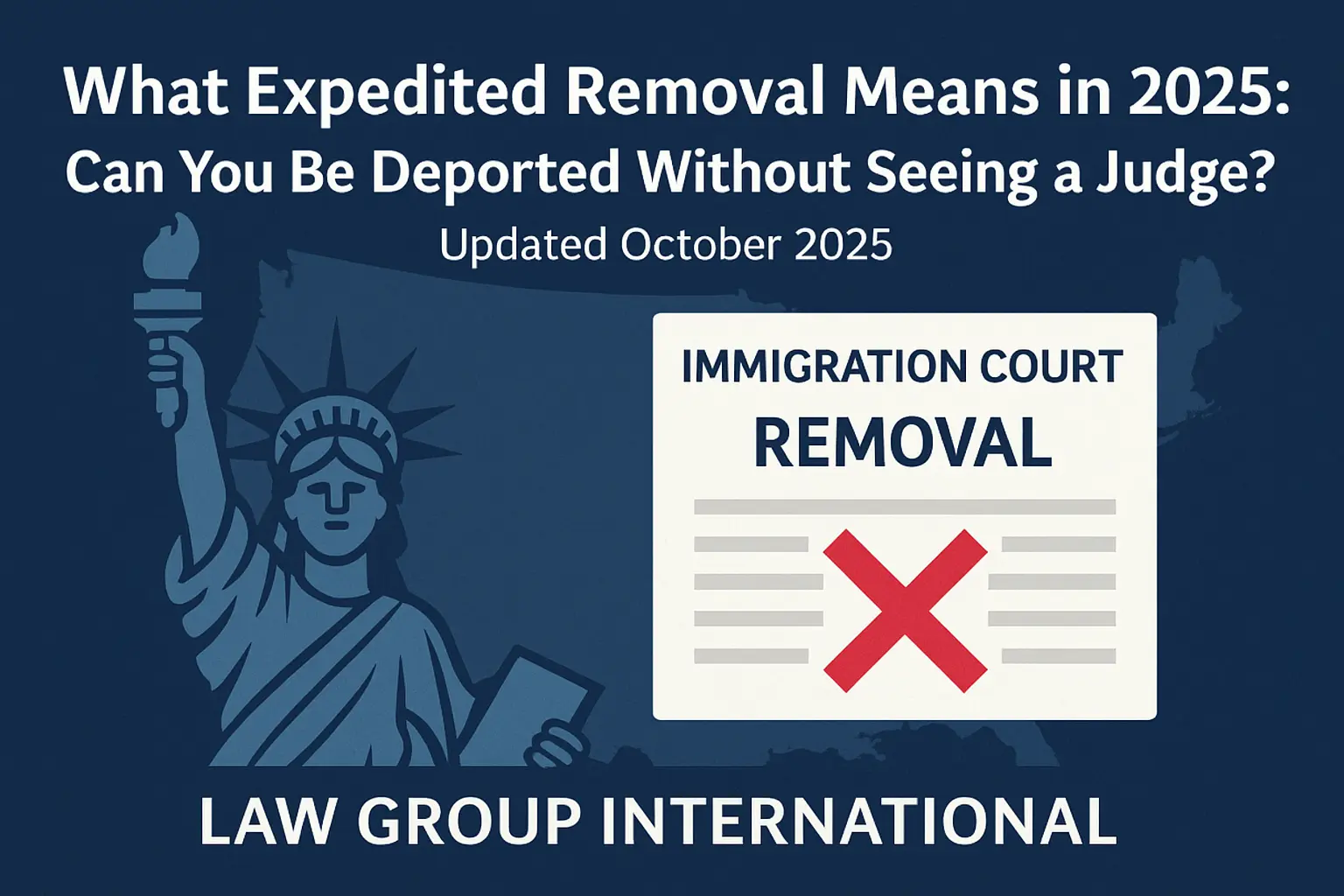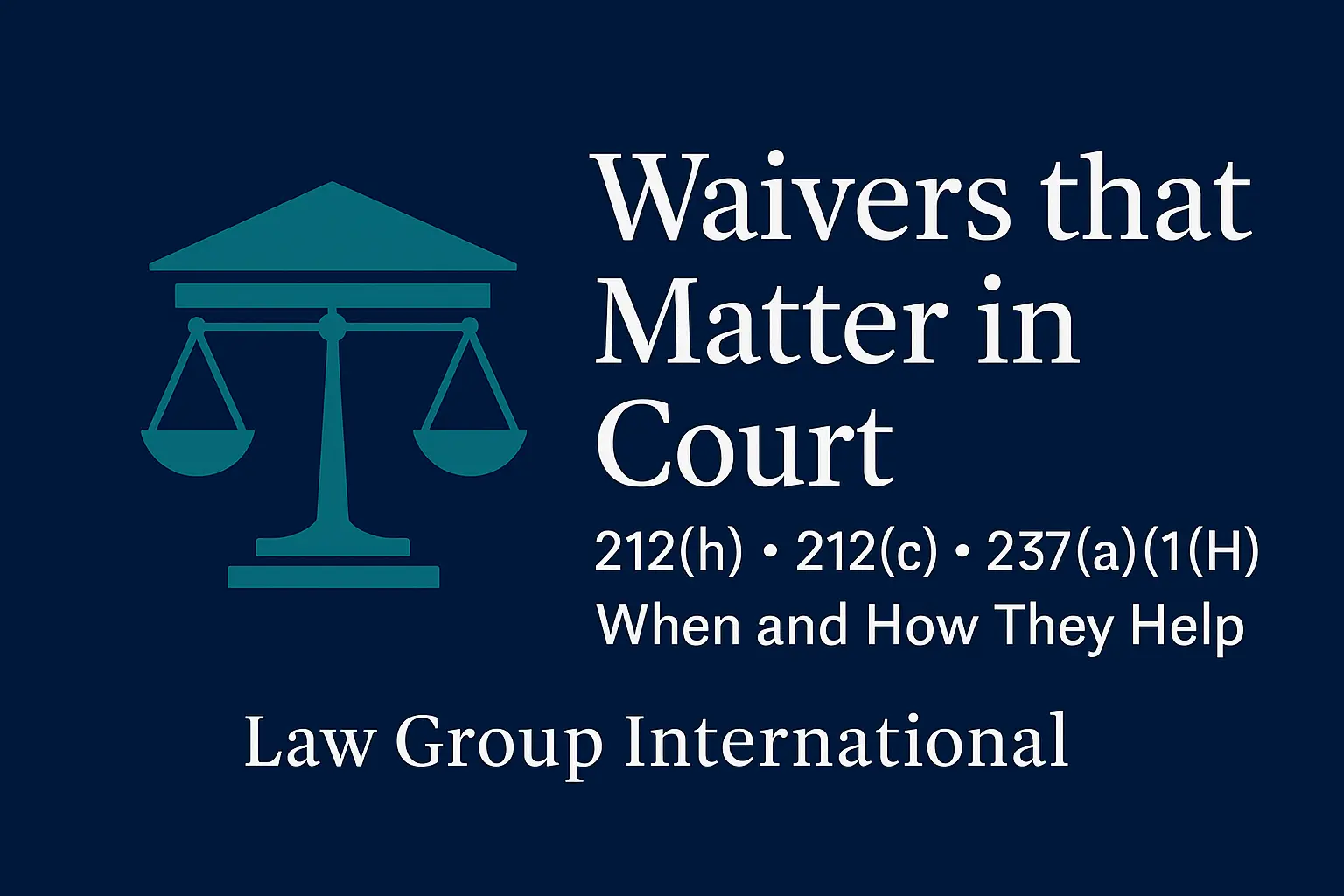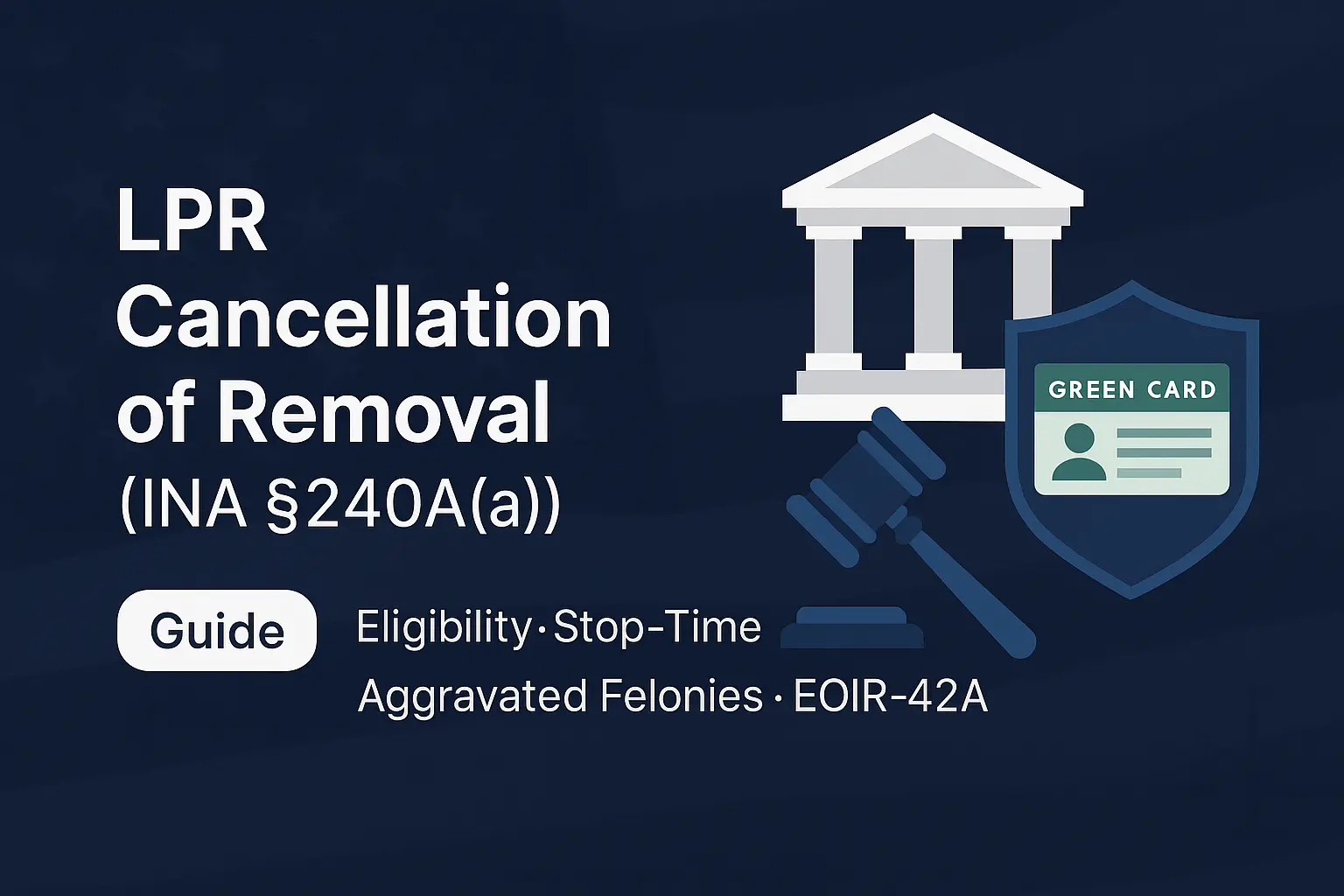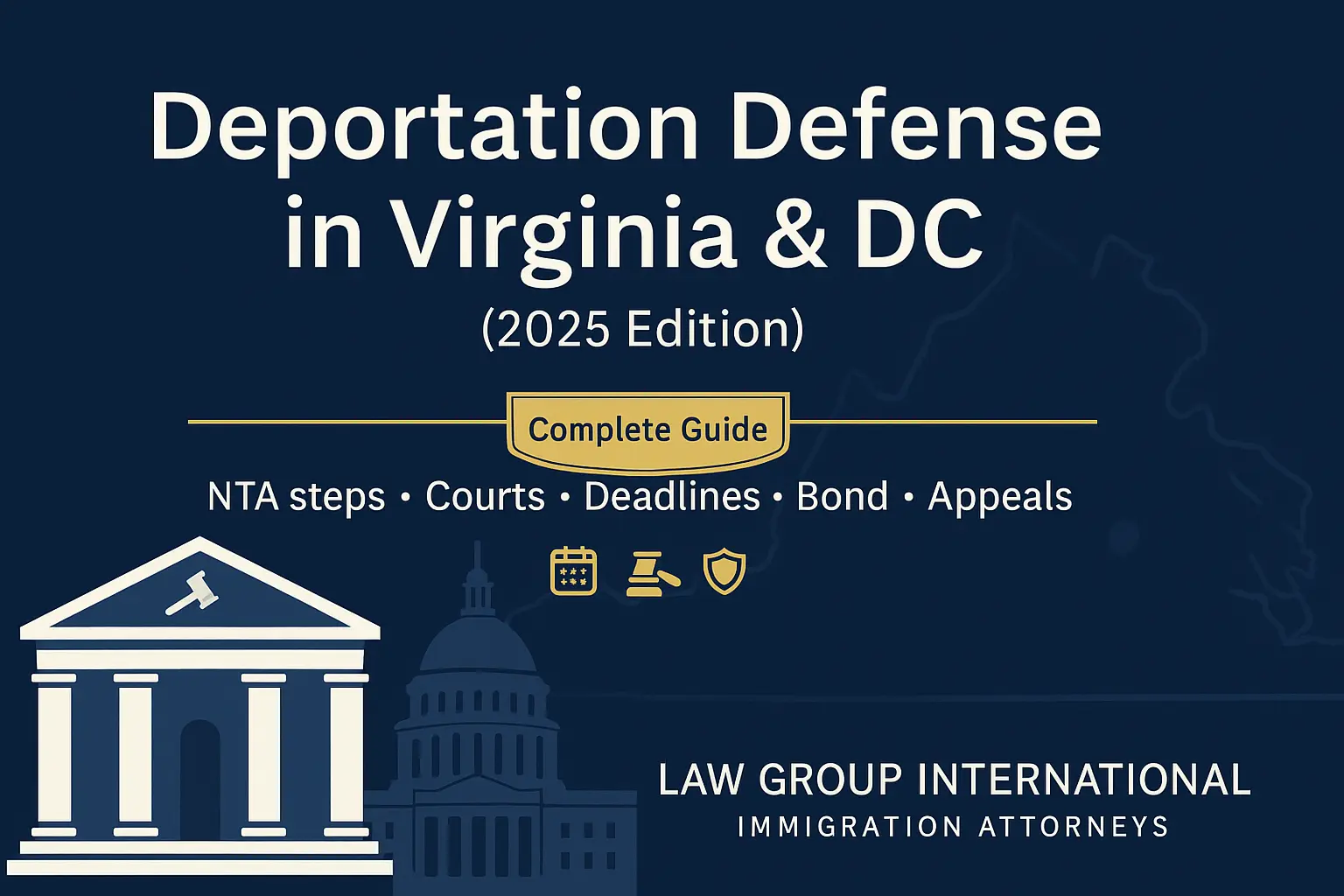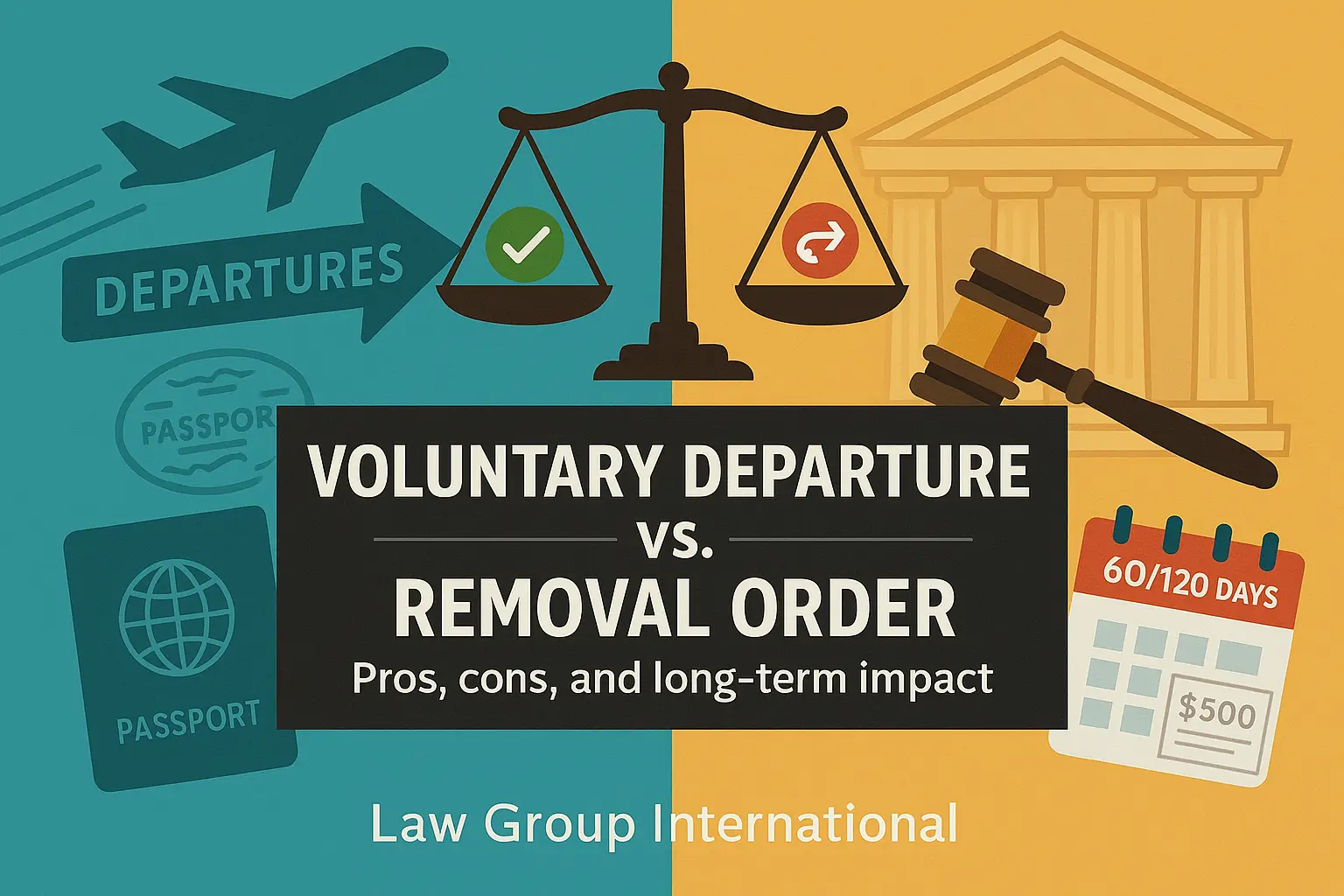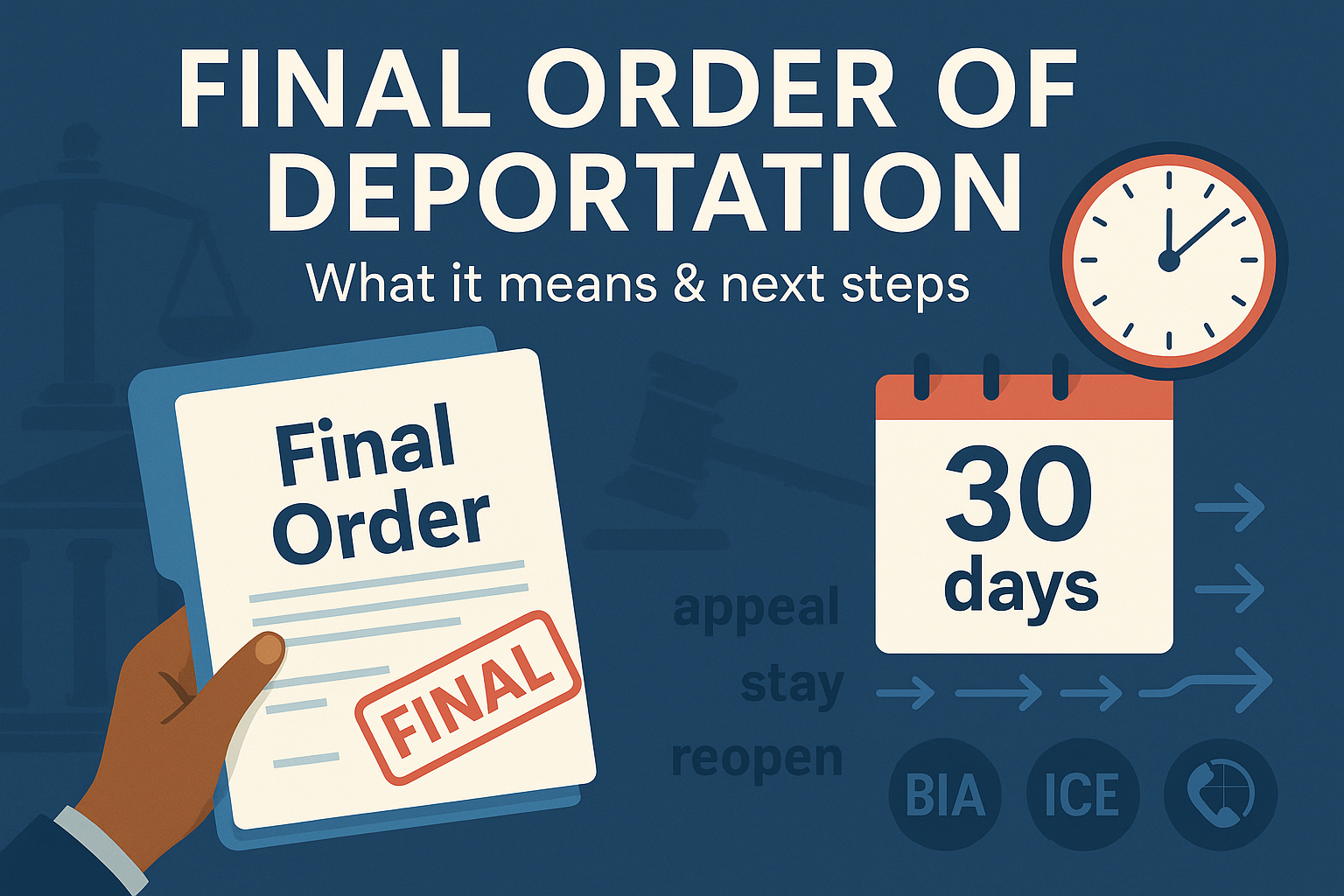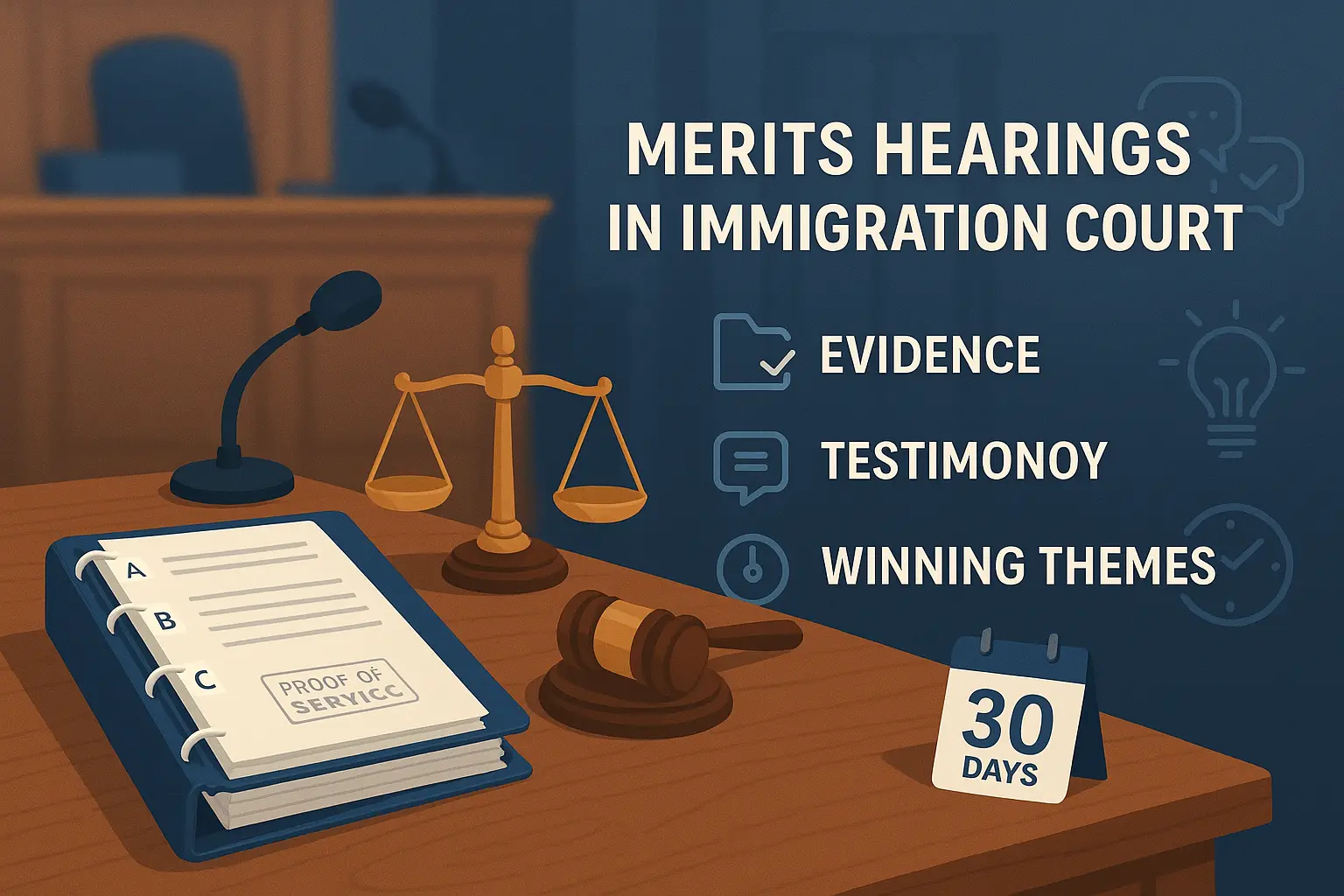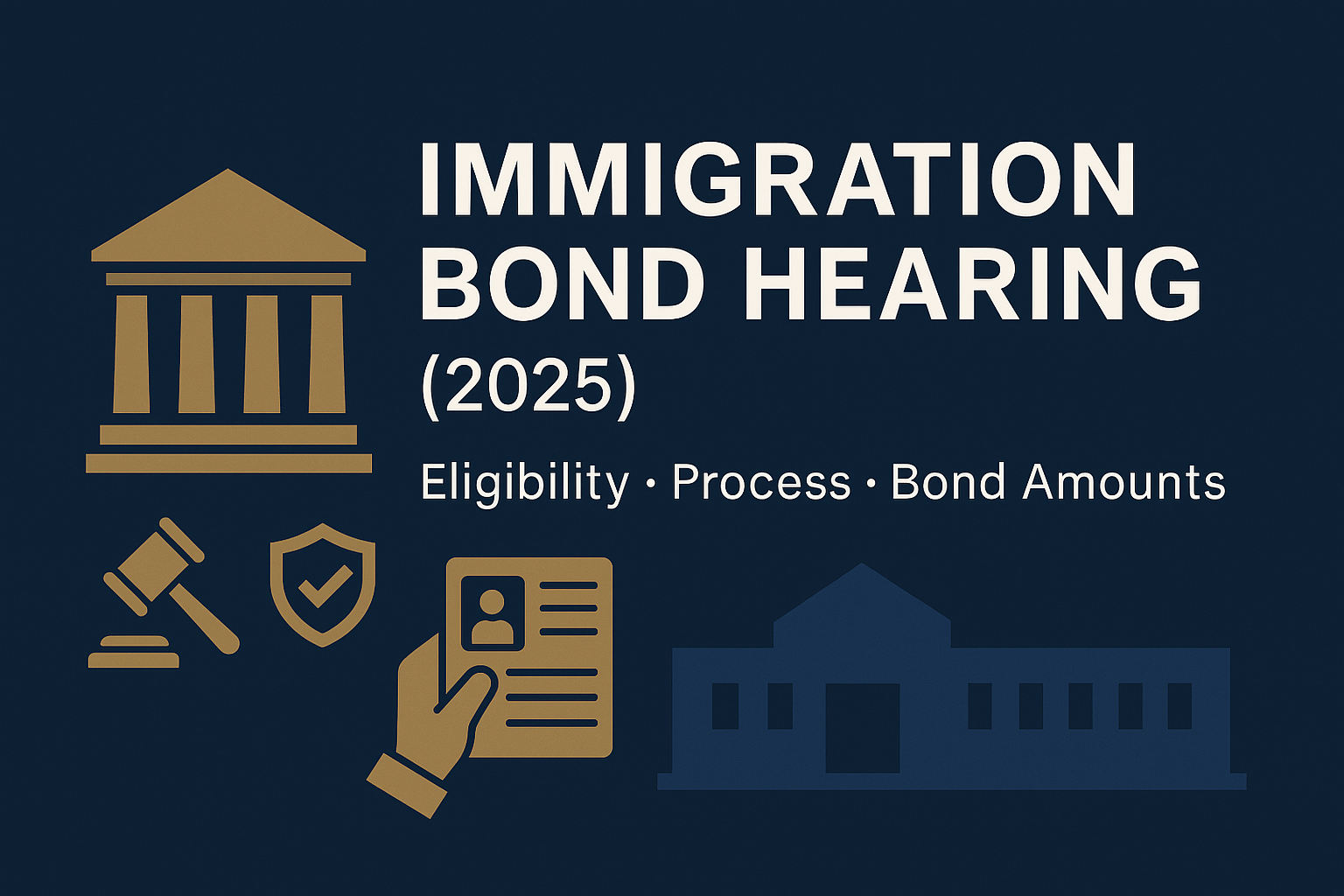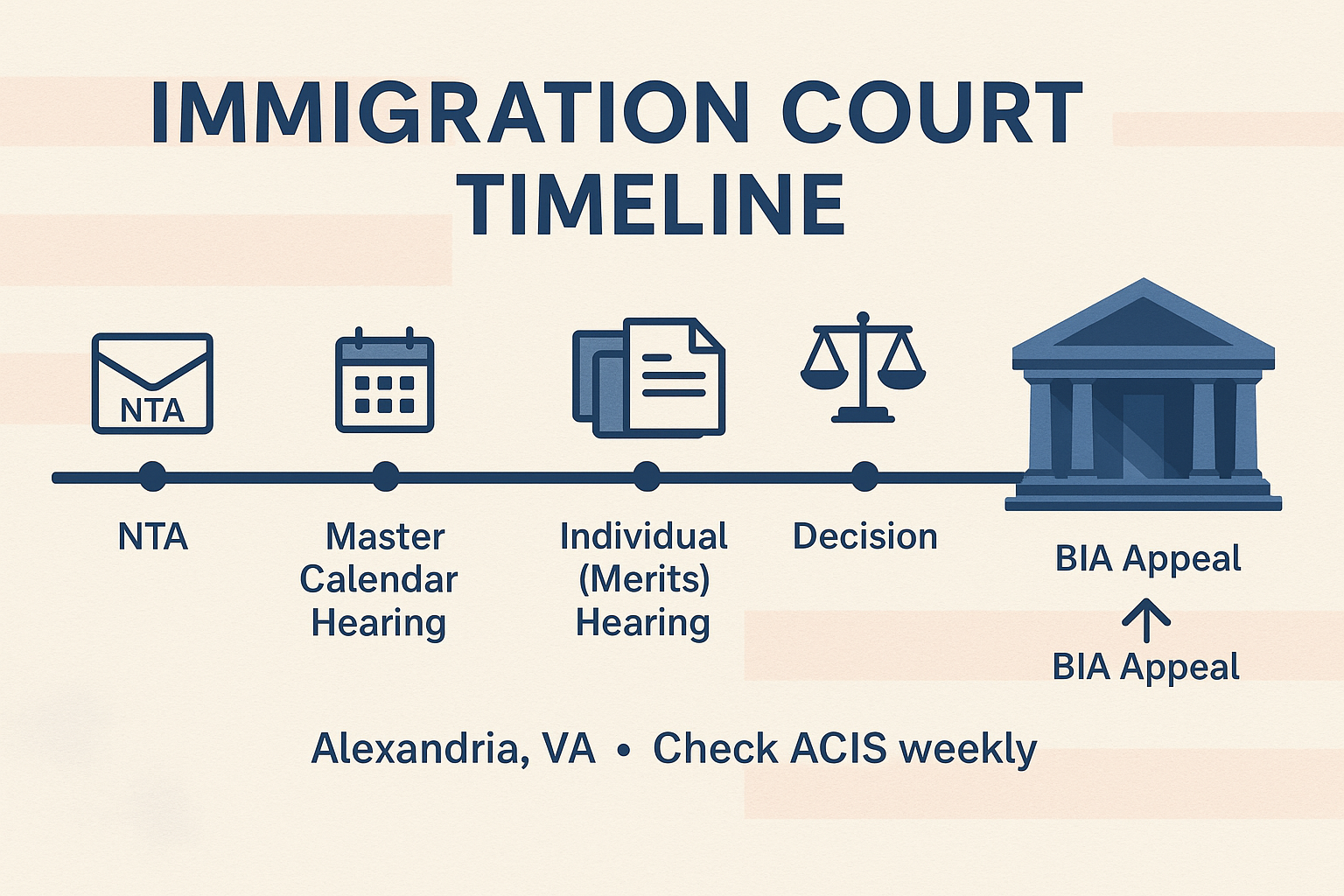Cancellation of Removal for Non-LPRs: The 10-Year Rule and Hardship Strategy
Updated October 2025
Facing deportation is one of the most stressful experiences any immigrant can endure. For many people who have lived in the United States for years, Cancellation of Removal for Non–Lawful Permanent Residents, often called the “10-year cancellation”, may be the last chance to remain lawfully in the country.
At Law Group International, we help individuals and families across the U.S. navigate this complex process with clarity, compassion, and a solid legal strategy. This guide explains who qualifies for non-LPR cancellation, how the 10-year rule works, and how to prove the most challenging part of all: “exceptional and extremely unusual hardship.”
Key Takeaways
- To qualify under INA §240A(b)(1), you must prove:
- 10 years of continuous physical presence (CPP) before “stop-time.”
- Good moral character (GMC) for those same 10 years.
- No disqualifying convictions under immigration law.
- “Exceptional and extremely unusual hardship” to a U.S. citizen or lawful permanent resident (LPR) spouse, parent, or child.
A successful case leads to lawful permanent resident (green card) status. (source)
- Stop-time rule: The 10-year clock stops when DHS serves a single Notice to Appear (NTA) that includes both the time and place of your first hearing (under Niz-Chavez v. Garland), or when you commit certain crimes under §212(a)(2).
- Hardship is not about you: it’s about your qualifying relative. You must prove cumulative hardship across medical, educational, financial, and emotional factors, using Board of Immigration Appeals (BIA) precedents like Monreal-Aguinaga, Andazola-Rivas, Recinas, and J-J-G-.
- Good moral character pitfalls: Multiple DUIs trigger a presumption against GMC and can derail your case under Matter of Castillo-Perez. Build a mitigation plan early.
- Filing timeline: File Form EOIR-42B with a $100 fee and biometrics receipt. Most immigration judges now follow the updated EOIR Practice Manual deadlines; filings at least 15 days before your Individual Hearing and responses within 10 days.
Eligibility Checklist at a Glance
| Requirement | Key Details |
| 10 years continuous physical presence | Must have lived in the U.S. for 10 years before stop-time applies. Long absences (>90 days at once or >180 total) break continuity. (ILRC) |
| Good moral character (GMC) | Maintain GMC for those same 10 years; beware of bars under §101(f) and the DUI standard from Castillo-Perez. |
| No disqualifying convictions | You cannot have certain criminal convictions under §§212(a)(2), 237(a)(2), or 237(a)(3). |
| Qualifying relative | Must show hardship to a U.S. citizen or LPR spouse, parent, or child (under 21, unmarried). |
| Result | If approved, you adjust to lawful permanent resident (LPR) status. |
Note: Survivors of domestic violence may qualify under VAWA cancellation, which has different requirements.
Understanding the Stop-Time Rule
The stop-time rule determines when your 10-year clock stops running. It’s critical to your eligibility.
- The clock stops when:
- DHS serves you a single, valid NTA that includes the time and place of your first hearing (Niz-Chavez v. Garland), or
- You commit a crime listed under §212(a)(2) of the Immigration and Nationality Act.
- Absence limits:
- Any trip abroad longer than 90 days breaks continuous presence.
- Multiple trips totaling over 180 days do the same.
- Pro tip: A final order of removal does not automatically stop time (see Matter of Chen). This can help in older cases.
Hardship Strategy: How Judges Evaluate and How We Prove It
The legal standard for hardship is high: you must show hardship that is “exceptional and extremely unusual.”
That means the impact on your qualifying relative must go far beyond the normal pain of family separation.
Key BIA Precedents
- Matter of Monreal-Aguinaga – Established the baseline: hardship must be “substantially beyond” what’s typical.
- Matter of Andazola-Rivas – Two-parent, employed households often don’t meet the threshold.
- Matter of Recinas – Single mother with U.S.-citizen children, strong ties, and economic vulnerability met the standard.
Medical and Psychological Hardship
Under Matter of J-J-G-, medical evidence must be specific, credible, and professional:
- Diagnosis by a licensed provider.
- Why equivalent care is not realistically available abroad.
- Documentation like medical records, prescriptions, and insurance denials. (DOJ)
Educational Hardship
- Submit IEP or 504 plans, evaluations, or therapist letters.
- Contrast available resources in the U.S. with realistic access abroad.
Country-Conditions Evidence
- Include State Department reports, NGO publications, and expert declarations on safety, healthcare, or education.
Judges weigh all these factors cumulatively; no single piece of evidence is enough.
Good Moral Character & Discretion
To win, you must show both good moral character (GMC) and discretion worthy of a green card.
Statutory and Conditional Bars
Certain crimes, false testimony, and habitual drunkenness are statutory bars under INA §101(f).
Multiple DUIs: The Castillo-Perez Rule
- Multiple DUIs create a rebuttable presumption against GMC.
- Judges often expect:
- Documented completion of treatment.
- Proof of sobriety (monitoring programs, counseling).
- Community service and good character letters.
Even then, GMC may still be denied, but it strengthens your discretionary argument.
Filing, Fees, and Deadlines
To apply for non-LPR cancellation, you must submit:
- Form EOIR-42B
- $100 filing fee (payable to the U.S. Department of Justice)
- Biometrics fee receipt from USCIS (attach ASC notice)
As of 2025, most courts follow EOIR Practice Manual rules:
- File at least 15 days before your Individual Hearing.
- Opposing responses are due 10 days after receipt.
The Annual Cap: Why Some Cases Get “Reserved”
Every year, the government grants a maximum of 4,000 non-LPR cancellation cases nationwide.
If the cap is reached, Immigration Judges can “reserve” approvals until the next fiscal year.
While waiting, keep your address current and avoid any legal or moral issues that could affect your eligibility.
If You Win… or Lose
- If you win: You become a lawful permanent resident (green card holder).
- If you lose: You can:
- File an appeal with the BIA within 30 days, or
- Submit a motion to reopen with new evidence (subject to deadlines).
How Law Group International Builds Winning Non-LPR Cancellation Cases
At Law Group International, we approach every case with strategy and empathy. Our team:
- Calculates stop-time and builds clear timeline charts.
- Crafts detailed hardship packets with medical, educational, and country-conditions evidence.
- Designs mitigation plans for clients with past DUIs or criminal records.
- Files timely, complete EOIR-42B applications with proper exhibits.
- Represents clients before the Annandale (VA) and Hyattsville (MD) Immigration Courts, the BIA, and the Fourth Circuit.
If you’ve lived in the U.S. for 10 years or more and fear deportation, we can help you determine if cancellation of removal is your path to a green card.
FAQs
Who counts as a qualifying relative?
A U.S. citizen or LPR spouse, parent, or child under 21 and unmarried.
Does a defective NTA stop the 10-year clock?
No. Under Niz-Chavez v. Garland, only a single NTA with time and place stops time. (American Immigration Council)
What kind of hardship evidence do I need?
Medical diagnoses, school records, therapy notes, and proof that care or education abroad would be inadequate.
What if I have DUIs?
You can still apply, but you’ll need strong evidence of rehabilitation to overcome GMC concerns.
Talk to a Deportation Defense Lawyer Today
If you or someone you love has been in the U.S. for 10 years or more and faces removal, don’t wait. The sooner you act, the more options you have.
At Law Group International, we offer:
- Free 15-minute eligibility reviews
- Bilingual representation (English, Spanish, Farsi, Dari)
- Local experience in Virginia, D.C., and the Fourth Circuit
- Strategic, compassionate defense tailored to your story
Explore More Immigration Topics
What expedited removal means
November 19, 2025
Waivers that Matter in Court
November 11, 2025
Cancellation of Removal for LPRs
October 28, 2025
Deportation Defense in Virginia & DC: Complete Guide
October 17, 2025
Voluntary Departure vs. Removal Order
October 7, 2025
What Is a Final Order of Deportation?
October 2, 2025
Merits Hearings in Immigration Court
September 30, 2025
Immigration Court Timeline: From NTA to Appeal
September 24, 2025

